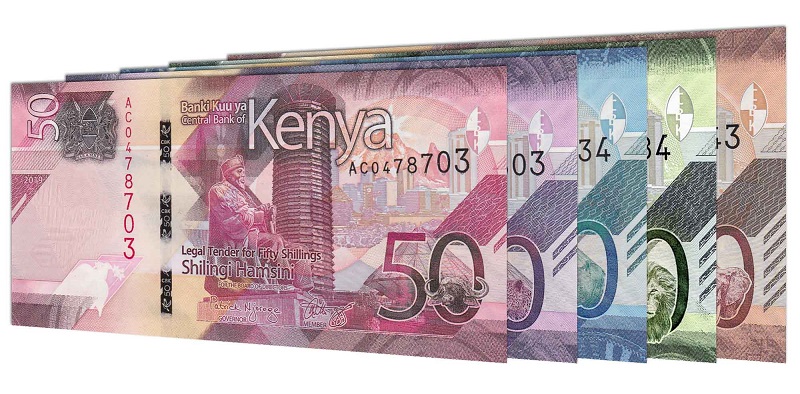- For SMEs in East Africa, currency fluctuations can be a double-edged sword.
- Direct impacts include changes in the cost of imports and exports, while indirect effects can influence demand for products and overall economic confidence.
- Understanding the impact of currency fluctuations on SMEs in East Africa is crucial for business owners aiming to ensure long-term sustainability and growth.
In today’s global market, the financial stability of small and medium-sized enterprises (SMEs) is deeply intertwined with the dynamics of currency exchange rates. For East African SMEs, this interrelation is particularly critical due to the region’s economic volatility and frequent currency fluctuations.
Understanding the impact of currency fluctuations on SMEs in East Africa is crucial for business owners aiming to ensure long-term sustainability and growth.
In East Africa, due to the interconnected nature of the economies with the global financial systems, currency fluctuations remains a big aspect of business success. In Kenya, the regions biggest economy, the Shilling an estimated 22 percent in value to the USD between March 200 and January 2024.
Since then, the Kenyan unit has been gaining steadily against the greenback and regional currencies of Tanzania and Uganda, impacting traders doing cross-border transactions.
The Impact of Currency Fluctuations on SMEs in East Africa
Currency fluctuations refer to the changes in the value of one currency in relation to another. These fluctuations can occur due to various factors such as geopolitical events, economic data releases, and changes in interest rates.
For SMEs in East Africa, these fluctuations can be a double-edged sword. On one hand, a devalued local currency can make exports cheaper and more competitive globally. On the other hand, it can increase the cost of imported goods and raw materials, thereby squeezing profit margins. Let’s explore some real-world scenarios to illustrate this:
- Case Study 1: A Kenyan coffee exporter benefits from a weaker shilling, making their products more affordable internationally.
- Case Study 2: A Ugandan technology firm faces higher costs for imported hardware due to a depreciating local currency.
How Currency Instability Affects East African SMEs
Currency instability involves unpredictable fluctuations that make financial planning challenging for businesses. This instability can arise from political unrest, poor fiscal policies, or unfavorable balance of trade.
SMEs in East Africa face specific challenges due to currency instability:
- Pricing Difficulties: Frequent currency changes complicate setting prices for goods and services.
- Increased Operational Costs: Buying supplies and raw materials becomes unpredictable and often more expensive.
- Cash Flow Issues: Predicting revenue and expenses becomes difficult, leading to potential liquidity problems.
In comparison, SMEs operating in regions with stable currencies enjoy smoother financial planning, reduced costs, and more predictable cash flows, highlighting the stark contrasts faced by East African businesses.
Managing Currency Risks for SMEs in East Africa
Effective strategies and tools are essential for managing currency risks. Here are some proven tactics:
- Hedging: Using financial instruments like forward contracts to lock in exchange rates.
- Diversification: Sourcing materials from multiple countries to mitigate the impact of any single currency’s fluctuation.
- Dynamic Pricing: Regularly adjusting prices in response to currency changes.
- Financial Planning and Forecasting: Robust financial planning helps predict and prepare for potential currency shifts. Tools like currency analytics software can offer real-time insights and trend analysis.
Currency Exchange Rate Impact on East African Small Businesses
Exchange rates have both direct and indirect effects on SMEs. Direct impacts include changes in the cost of imports and exports, while indirect effects can influence demand for products and overall economic confidence.
- Positive Impact: A weaker local currency can boost export competitiveness and market share globally.
- Negative Impact: Increased costs for imported goods can erode profit margins and financial stability.
Government policies, such as interventions in the foreign exchange market or fiscal policies aimed at economic stabilization, can significantly influence these outcomes. For instance, central banks sometimes intervene to stabilize their currency, thereby providing a more predictable business environment for SMEs.
Economic Instability and Its Effects on East African SMEs
Economic instability in East Africa often exacerbates the issues arising from currency fluctuations. High inflation rates, political unrest, and inconsistent fiscal policies contribute to an uncertain economic environment.
- Short-term Effects:
- Sudden spikes in operational costs.
- Volatile revenue streams.
- Increased borrowing costs.
Long-term Effects:
- Difficulty in securing investment.
- Reduced growth potential due to financial uncertainty.
- Strained supplier and customer relationships.
Overall the impact of currency fluctuations on SMEs in East Africa is profound, influencing everything from pricing strategies to overall profitability. Understanding how currency instability affects East African SMEs is crucial for navigating these challenges. By implementing strategies to manage currency risks, businesses can mitigate these adverse effects and ensure more stable operations.
East African SME owners are encouraged to seek professional advice on managing currency risks to safeguard their financial health. Whether through financial consultants or using advanced currency management tools, taking proactive steps can help stabilize operations and foster growth in a volatile economic landscape.
Read also: How asset financier Watu is powering adoption of green mobility in East Africa
